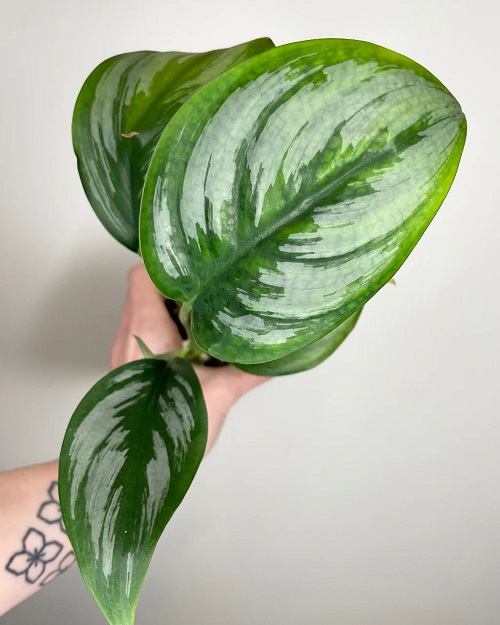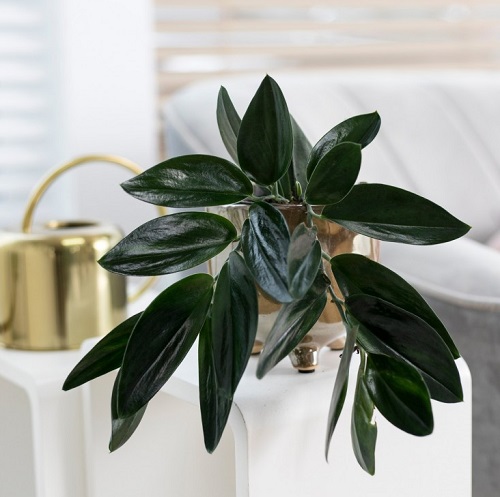Take a look at the Best Types of Scindapsus Treubii Varieties! With funky patterns and shades, they will make any room pop.
Discover the names of 5 fascinating varieties of Scindapsus plants, each with unique leaf markings that make them great for a houseplant collection. From the captivating leaves of “Moonlight” to the seductive depth of “Dark form” and the beautiful variegation of “Jade,” let’s check out below.
Look at the Most Beautiful Scindapsus Varieties here
Best Types of Scindapsus Treubii Varieties
1. Moonlight
Botanical Name: Scindapsus Treubii ‘Moonlight’
‘Moonlight’ has leaves that resemble a starry night with a distinctive silver-gray shimmer against dark green margins. Even in low light, its heart-shaped leaves survive, creating a soft, serene atmosphere. It is also known as Scindapsus ‘Sterling Silver.’
2. Black Pothos (Dark Scindapsus)
Botanical Name: Scindapsus treubii ‘Dark Form’
The silky, deep green leaves of “Dark Form” makes it one of the best scindapsus treubii varieties that stand out well against any background.
Learn Growing Scindapsus treubii ‘Dark Form’ here
3. Jade Scindapsus
Botanical Name: Scindapsus Treubii ‘Jade’
Admire the elongated and variegated leaves of “Jade,” which have a mesmerizing jade-green tint. The trailing aspect of this type makes it the perfect accent to hanging pots; this trait also makes it appear great when it cascades down softly from the shelves.
Check Indoor Creeper Plants that Trail Gracefully in this Article
4. Scindapsus ‘Sumatra’

Botanical Name: Scindapsus treubii ‘Sumatra’
Within the ‘Treubii’ subvarieties, you’ll find the exquisite ‘Sumatra,’ displaying striking brush strokes of chartreuse, silver, and blue-gray on its lush, sizable leaves. This unique Scindapsus type requires attentive care to ensure its continued growth and well-being.
5. Scindapsus ‘Mint’

Botanical Name: Scindapsus treubii ‘Mint’
‘Mint’ boasts beautiful glossy leaves and like the above treubii variety, this too is an excellent addition to hanging pots, where its vines gracefully trail down. It thrives in bright indirect light, making it suitable for indoor settings.




